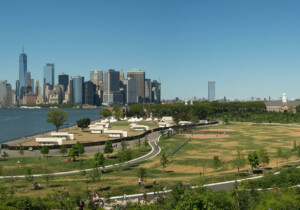With Bill de Blasio making traffic regulation a priority of his fledgling administration, new visualizations of traffic injuries across New York City illustrate what the new mayor is up against in attempting to make such incidents a thing of the past. Statistician and Pratt professor Ben Wellington has used open data documenting traffic fatalities and cyclist injuries to generate heat maps of where in the city such events tended to occur in 2013.
The resulting images, published on Wellington’s blog I Quant NY, paint a somewhat grim image. A map that simply locates each of last year’s 3800 reported cyclist injuries is so swarmed as to be rendered largely uninformative when zoomed out. The heat map generated from this diagram points to the Lower East Side of Manhattan and its cross-river neighbor, Williamsburg, as accident hotbeds.
Despite these clear visual trends, such developments do not necessarily indict these two areas as more explicitly dangerous for bikers and then other parts of the city as they do not incorporated ridership density. Thus it is possible that these neighborhoods appear swathed in red simply because their streets play host to a higher amount of two-wheeled traffic than other portions of the city.
Williamsburg maintains its scarlet presence in a map depicting 2013 traffic deaths. The East Side makes a slightly less conspicuous appearance while northern parts of Manhattan and the Bronx also reveal a proclivity for such incidents.
Wellington identifies Brooklyn’s Broadway, Queens Boulevard, and Grand Concourse in the Bronx as particularly deadly roadways. If the mayor gets his wish, generating 2014’s iterations of these maps will be a far easier task. Nonetheless the images only reinforce the idea that Vision Zero—and the heat-free maps it would create—appears to be quite a lofty goal.










